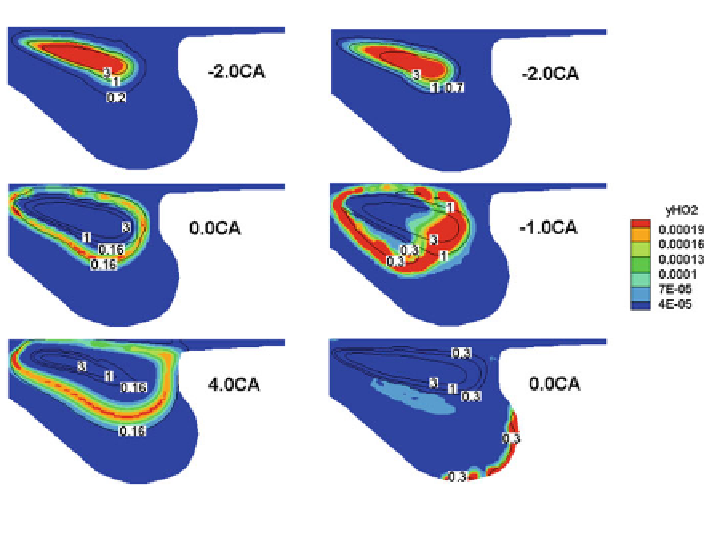Environmental Engineering Reference
In-Depth Information
95%
98.5%
Fig. 19 HO
2
mass fraction contours at different crank angles for the 95 and 98.5 % syngas cases.
Black lines indicate
ϕ
contour (
ϕ
= 0.16
-
3)
indicate signi
flame propagation for the 98.5 % syngas case compared
to the 95 % syngas, since the gaseous equivalence ratios for the two cases are 0.7
and 0.17 (Table
3
). In fact for the latter case, the
cantly faster
fl
°
ATDC due to ultra lean conditions, and due to decreasing temperature and pressure
during the expansion stroke. Furthermore, the comparison of HO
2
contours for the
97 % methane (Fig.
17
) and 98.5 % syngas cases indicates signi
fl
flame gets extinguished at about 4
ame
propagation in syngas-air mixture than that in methane-air mixture. However, as
indicated in Table
3
, the thermal ef
cantly faster
fl
ciency is noticeably lower for 98.5 % syngas
compared to that for 97 % methane. This is further discussed in the next section.
In summary, for certain operating conditions, the combustion process in syngas-
based dual-fuel engine may become nearly spontaneous, which can possibly lead to
knocking.
4.4 Dual-fuel Engine Performance and Emissions
Two of the performance parameters, i.e., IMEP and engine ef
ciency computed
from pressure pro
les (p-v diagram), are listed in Table
3
for all the
ve cases. At
low load, the IMEP and engine ef
ciency are lower for the dual-fuel (90 % methane
and 95 % syngas) cases compared to the single-fuel case, although they are slightly
higher for syngas compared to those for methane. The loss of performance at low

Search WWH ::

Custom Search